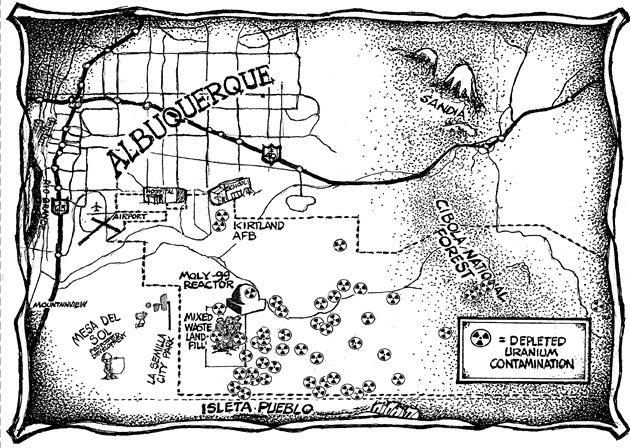
Institute for Policy Studies (IPS)
Institute for Policy Studies (IPS) is one of 39 environmental and peace organizations that won a landmark lawsuit against the U.S Department of Energy for failure to follow-through on adequate environmental cleanup during its 50+ years of nuclear weapons research, testing, and production. Part of this settlement was the establishment of the MTA Fund (Citizens’ Monitoring and Technical Assessment Fund), which provided $6.25 million for tribes and non-profit organizations to assess and conduct independent technical and scientific studies regarding the multitude of technical, ecological, and health issues surrounding the nation’s nuclear weapons complex.
Clark University was chosen by the non-profit peace and environmental groups as the conservator of these reports to ensure they remain available to the public in perpetuity. The unconventional election of university as conservator is an innovative example, particularly within the era of Web 1.0, of higher education as protector and provider of information through wide dissemination.
The research and reports available in this series were conducted by the Institute for Policy Studies (IPS) with their allocated portion of the MTA fund.
If you have any questions or concerns please contact us at digitalrepository@clarku.edu.
-

Reducing the Risks of Highly Enriched Uranium at the U.S. Department of Energy's Y-12 National Security Complex
Institute for Policy Studies (IPS)
In February 1996, the Energy department announced that the United States had produced 994 metric tons of highly enriched uranium (HEU). 1 While this information received a considerable amount of attention, a subsequent report about HEU storage conditions at DOE sites did not. This report, issued in December 1996, concluded that the Y-12 National Security Complex in Oak Ridge TN had the most numerous and significant environmental, safety and health vulnerabilities of all DOE sites.
At the time, the Y-12 complex was storing more than 189 metric tons of HEU comprised of 32,000 items in the forms of dismantled weapons parts, solutions, oxides, combustibles, and residues. Risk of fire was a dominant concern because of the age and deterioration of buildings, most of which were constructed in the 1940’s, combined with degraded or non-existent fire protection systems. The DOE assessment teams found a large back log of “combustible in process materials” which had accumulated in “virtually every building [and] posed an unnecessary vulnerability with respect to fire loading.” The likelihood of a fire at the site’s primary HEU storage facility, a wooden structure built in 1944, was “estimated to be five years to end of facility-life.
According to the assessment, “sixty percent of the drum-type storage containers at Y-12 have never been opened. Some are over 20 years old.” This raised questions about the accuracy and completeness of a physical inventory of HEU done by the Department in 1994. “The Y- 12 Plant did not generate nor maintain comprehensive records on the storage configurations. Most containers were received at the Y-12 Plant and placed direct into storage without opening.”
Two years later, the DOE stopped reporting progress in correcting these problems in its environmental, safety and health performance indicator assessments.
To better understand these problems and what has been done to fix them, this author conducted a review of several official open source documents including those generated by the Department of Energy, National Research Council and the United States Congress, and non governmental organizations. Several knowledgeable experts with extensive experience in the Energy department were also interviewed. This task was made more difficult because in the past few years, important information regarding the safety and management of the Y-12 complex appears to have been removed by DOE from the public record. The DOE also now prevents public access to previously open information, regarding environmental, safety and health oversight, and accident investigations, based on a classification category known as “business sensitive.” Despite the growing lack of transparency, the record is clear enough to show that the legacy of nuclear weapons production at the Y-12 site remains a fundamental challenge of national importance.
This research was completed money allocated during Round 6 of the Citizens’ Monitoring and Technical Assessment Fund (MTA Fund). Clark University was named conservator of these works.
If you have any questions or concerns please contact us at digitalrepository@clarku.edu


